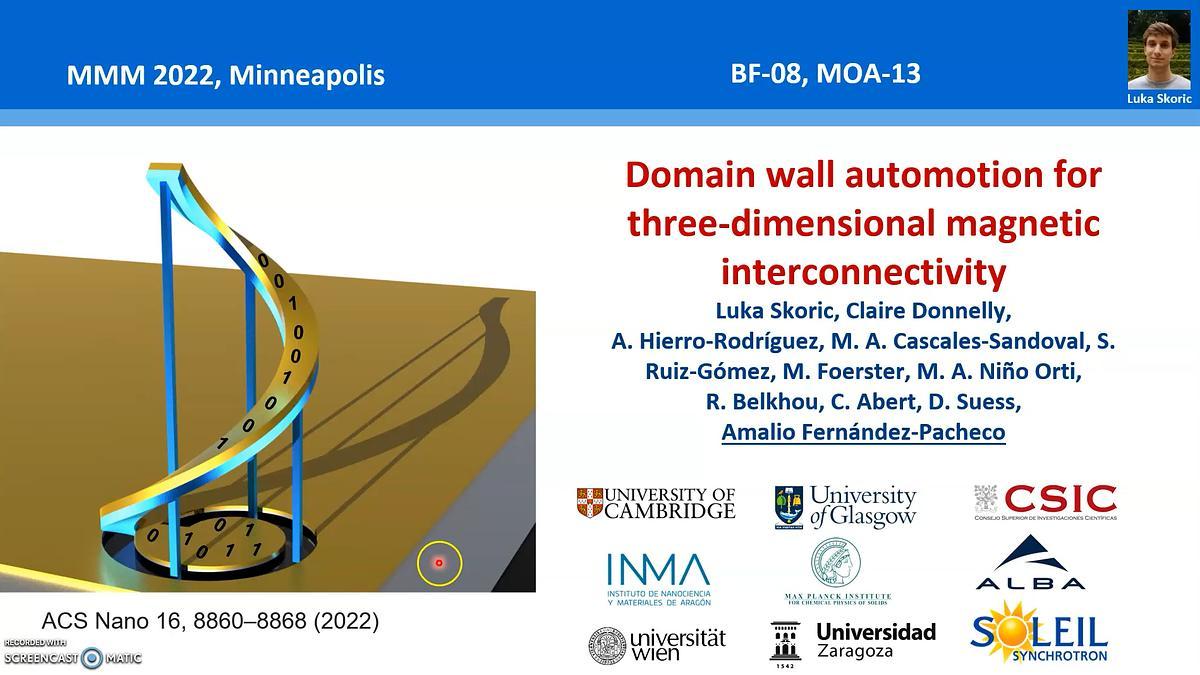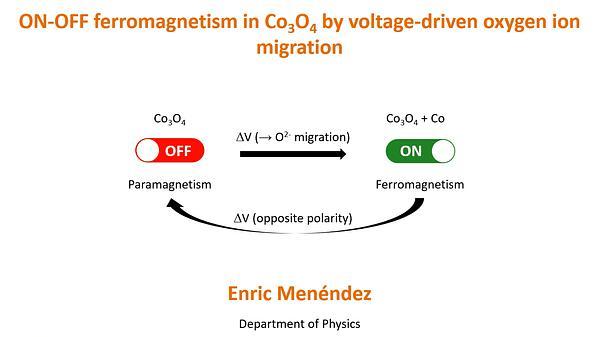
Premium content
Access to this content requires a subscription. You must be a premium user to view this content.

technical paper
Domain Wall Automotion for Three Dimensional Magnetic Interconnectivity
The automotion of spin textures, where geometrical gradients are exploited to propagate localized magnetic states without the need of external stimuli, is a promising phenomenon for fast, low-power transmission of magnetic information, as previously demonstrated in planar nanowire systems 1.
Here, we show that automotion is an attractive mechanism in 3D nanowire circuits for the vertical interconnectivity of functional magnetic planes, alternative to the standard current-based spintronic effects normally employed to move spin textures.
To showcase this new approach, we have prototyped 3D spiral nanowires by a combination of 3D-printing Focused Electron Beam Induced Deposition and physical vapor deposition methods 2, 3. The magnetic devices (Fig. 1) are made of Permalloy and are 3 μm tall, 150
nm wide, presenting curvature gradients of 0.09 μm-2. Due to the high directionality of the physical deposition process, they have average thickness gradients of -5.3nm/μm; this very large thickness gradient results to be the dominating mechanism responsible for 3D domain wall automotion, as micromagnetic simulations indicate.
We have directly imaged the automotion of domain walls in the 3D spirals using “shadow†X-ray photoelectron microscopy 4. In these experiments, we nucleate a pair of domain walls at different locations within the spirals using external magnetic fields, and directly observe the evolution of the system as the field is reduced until reaching zero value (Fig. 2). The experiments show the successful automotion of the walls along the 3D interconnectors, and its competition with the intrinsic pinning present in the devices at localized regions.
This work thus proposes and successfully demonstrates the automotion of spin textures as a viable effect to create 3D interconnected magnetic devices 5.

